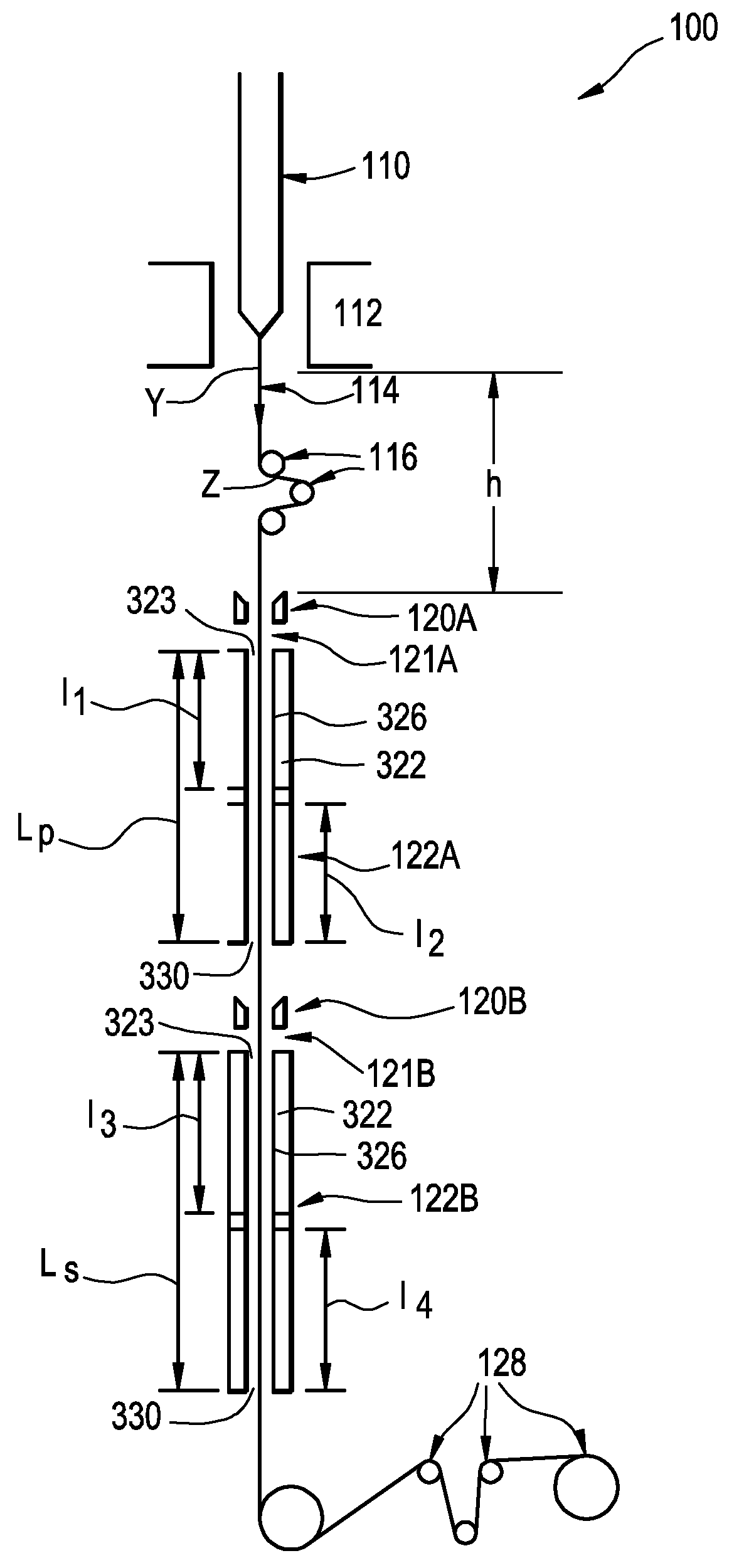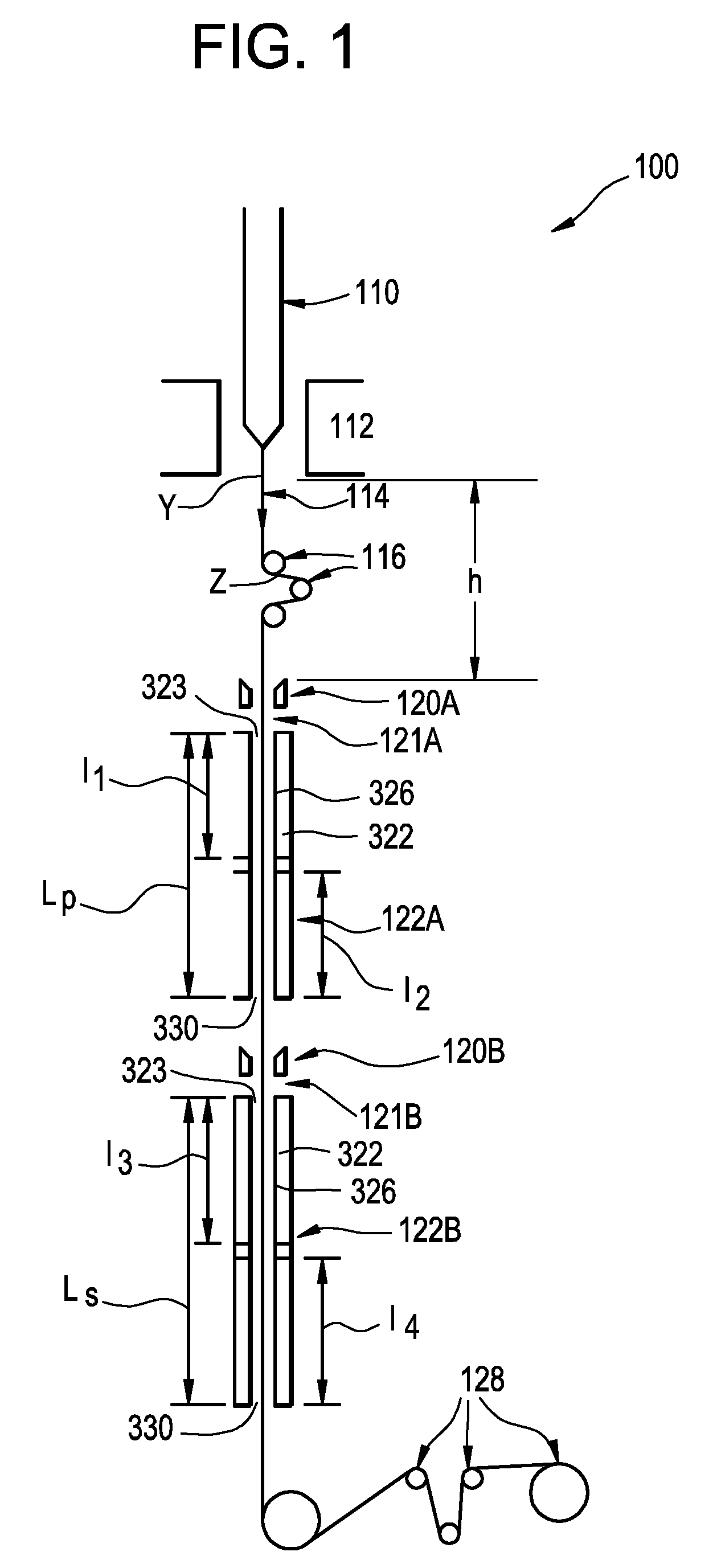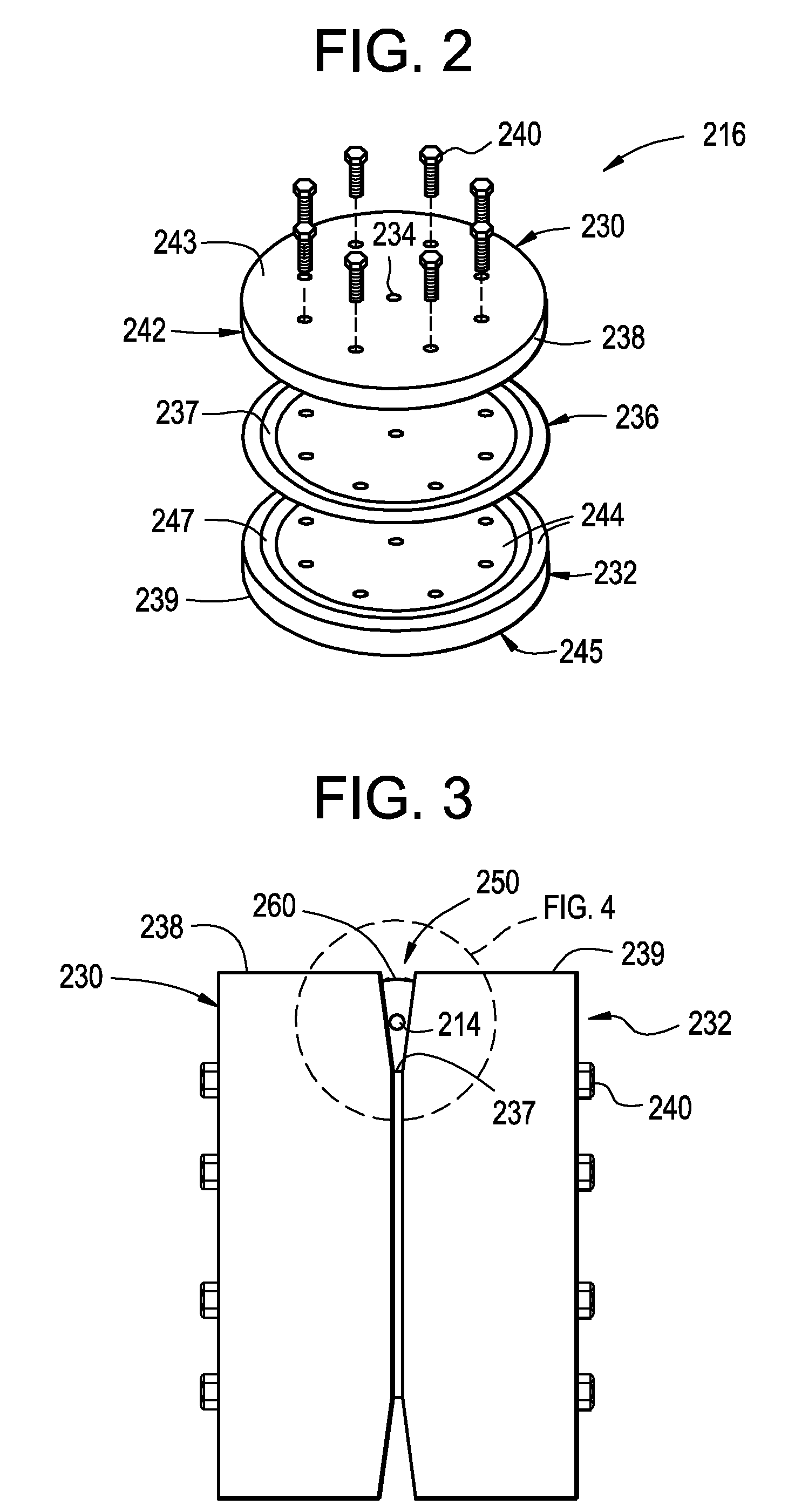Fiber Cure with Extended Irradiators
- Summary
- Abstract
- Description
- Claims
- Application Information
AI Technical Summary
Benefits of technology
Problems solved by technology
Method used
Image
Examples
Embodiment Construction
[0018]Reference will now be made in detail to the present preferred embodiment(s) of the invention, examples of which are illustrated in the accompanying drawings.
[0019]The invention provides new system(s) and method(s) for producing optical fibers along nonlinear paths through the use of fluid bearings. Embodiments of the present invention are herein described in detail in connection with the drawings of FIGS. 1-5, wherein like numbers indicate the same or corresponding elements throughout the drawings.
[0020]Higher draw rates reduce the cost of manufacturing optical fiber. When coating an optical fiber it is important to produce, at high draw rates, uniform, strong coatings that can protect the fiber core. However, when a freshly coated fiber is not provided with a sufficient dwell time inside irradiators (for example, when the fiber is drawn too fast through the irradiation devices), the fiber coating may not cure sufficiently and the fiber will suffer from defects such as delamin...
PUM
| Property | Measurement | Unit |
|---|---|---|
| Length | aaaaa | aaaaa |
| Length | aaaaa | aaaaa |
| Length | aaaaa | aaaaa |
Abstract
Description
Claims
Application Information
 Login to View More
Login to View More - R&D
- Intellectual Property
- Life Sciences
- Materials
- Tech Scout
- Unparalleled Data Quality
- Higher Quality Content
- 60% Fewer Hallucinations
Browse by: Latest US Patents, China's latest patents, Technical Efficacy Thesaurus, Application Domain, Technology Topic, Popular Technical Reports.
© 2025 PatSnap. All rights reserved.Legal|Privacy policy|Modern Slavery Act Transparency Statement|Sitemap|About US| Contact US: help@patsnap.com



